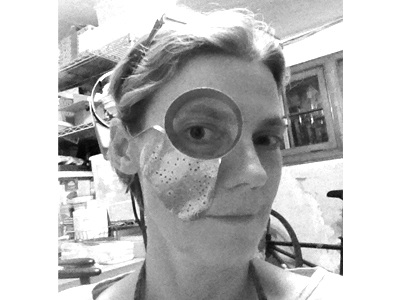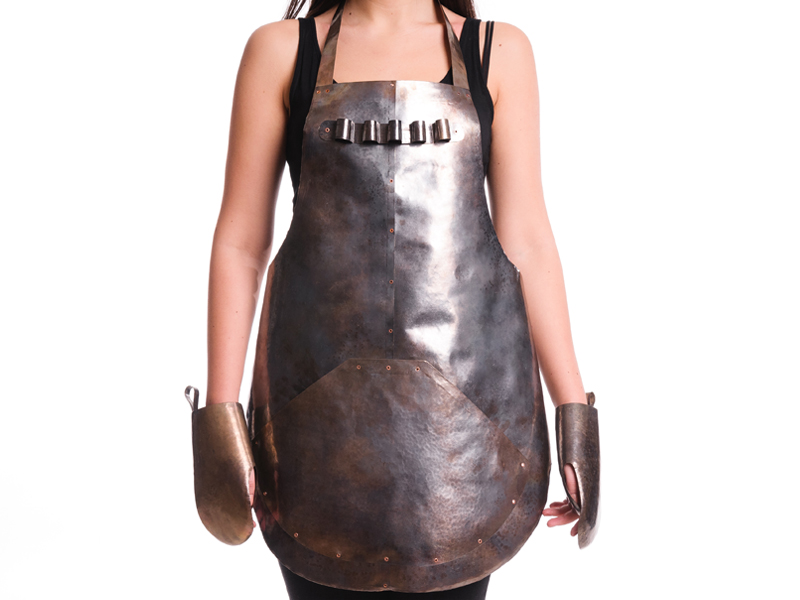
Eija Mustonen is an artist who invites introspection. Her work emphasizes craftsmanship and challenges ornamentation; it is personal and rooted in her native Finnish cultural heritage. Her recent work will be shown at gallery Four in Gothenburg, Sweden.
Eija is also part of the Hibernate group, along with artists Helena Lehtinen and Tarja Tuupanen. A new book on Hibernate’s work will be launched at Schmuck 2016 in Munich, Germany, at Gallery 84 GHz, followed by an exhibition in April at Ornamentum Gallery in Hudson, New York.
Besides her artistic career, Eija has been curating exhibitions and teaching. Since 2010, she has been the program manager leader of fine arts at the Saimaa University of Applied Sciences in Finland.
Adriana G. Radulescu: How and why did you start making jewelry?
Eija Mustonen: After high school I studied at an art and craft college that specialized in stone carving. It opened for me an interesting world of arts and craft, and later on I continued my studies as a silversmith. At that time the studies were quite technical. A small group of students were curious and wanted to know and see more of what was happening outside of Finland. In 1985 we visited Copenhagen in Denmark and saw artists working in a different way, as it was a time for materials revolution. In 1986 we visited Stockholm, Sweden, where there was a big contemporary jewelry exhibition called Nya Smycken (New Jewelry). These trips opened up my eyes; plain shiny silver and technical values were not the thing I wanted to do. I had found my home in contemporary jewelry. Jewelry size is a good size and it has given me the freedom to handle themes I’m interested in.
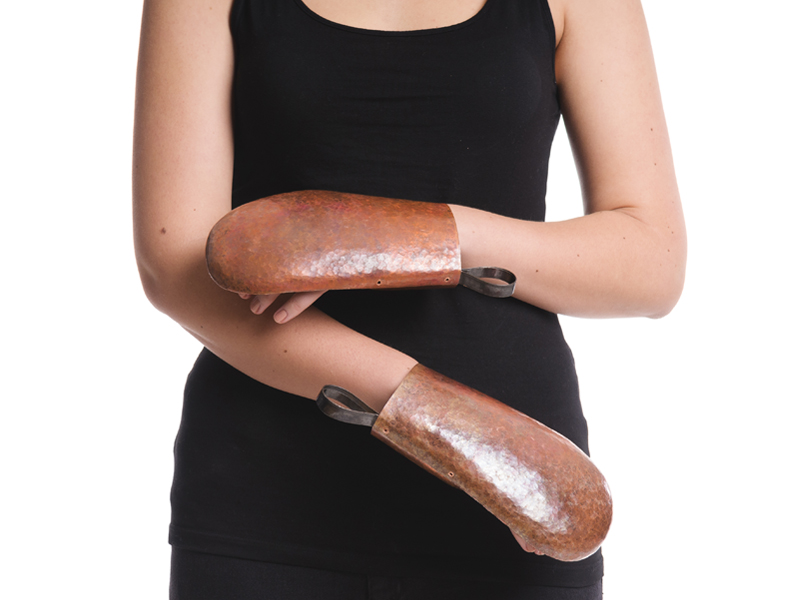
Where were you born, and where did you study metalworking and jewelry making? Where do you live now?
Eija Mustonen: I was born in Polvijärvi, a country village in North Karelia, Finland. After high school I studied stone carving at the Craft College of Lappeenranta (1981–1983) and afterward silversmithing at the Institute of Industrial Arts and Handicrafts in Lahti (1983–87). After graduating I set up a workshop in Ylämaa, where I still live and work. It’s a small countryside village near the Russian border. Later on I received a master of arts degree at the University of Industrial Arts of Helsinki in 2005. During those studies I had the opportunity to become an exchange student at the Rietveld Academy in Amsterdam, the Netherlands.
What inspires your work?
Eija Mustonen: Everyday life, people, relationships, nature, politics.

Aprons and Mittens are pieces beyond jewelry and more like sculptures for the body. The Mittens in exhibition are also displayed in an anatomy glass case. What is their concept and meaning?
Eija Mustonen: The Apron and Mittens protect their user. They are used while shoveling, harvesting, hammering, gardening, cooking. Apron and mittens protect you from dirt, hard work, heat, cold. They are symbols for work, they represent manual labor.
These nickel silver and copper apron and mittens are made by using my early skills, as I was educated as a silversmith 30 years ago. Hammering metal with a hammer and anvil fascinates me, how two-dimensional metal plates can be formed into a three-dimensional form. With these pieces of work I want to honor craft and especially smithing.
In general mittens have many meanings: In Finnish, “to give the mittens” it is to refuse a proposal. To “hit the mittens on the table” is to give up. To “hang your mittens on the nail” means that work has been done.
The Mittens in an anatomy glass case were part of an exhibition organized by the Hibernate group (Helena Lehtinen, Tarja Tuupanen, and I) at the Imatra Art School during KORU5—an art event last summer in Finland. Plaster hands fit well together with mittens, don’t they?
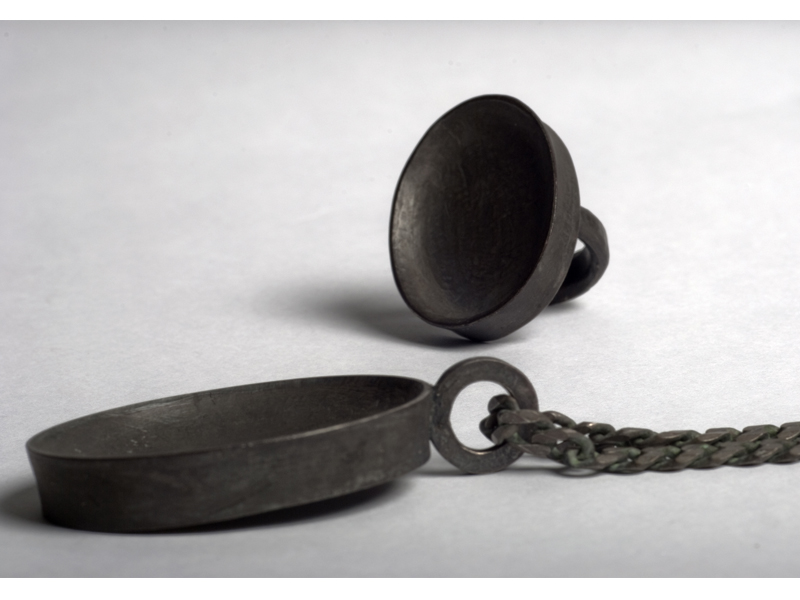
Many of your titles are very intriguing, such as Impetus and Mourning. Can you tell us about their significance in relationship to the work?
Eija Mustonen: Impetus was a work where I was looking for the impulse for life. I selected forms from the fauna, flora, and crystal kingdoms. For flora, a tuber of amaryllis; for fauna, the heart of a pig (which is the same size as a human heart); for crystal, a crystal of quartz.
Some years ago I had sorrow in my life, some relatives and friends had passed away. In old times, people used to wear a piece of jewelry to show they were mourning. I have made plain forms of traditional pendants and used “mourning” materials like black silver, horn, and ebony. In these pieces of work, the material is cast and the silver oxidized. They are black and heavy; like mourning is.

Several of your pieces evoke the visceral—for example After Wedding Night and BigLove. What is their story and where did your ideas for them come from?
Eija Mustonen: It is quite common that jewelry artists make jewelry in the form of a heart, as the heart is a symbol for love. In Finland it has been a custom that after their wedding night, the husband gives his wife a pearl necklace; the After Wedding Night necklace is my version of it. In Finnish there is a word for someone that you love, kyyhkyläiseni—my love dove. I took a mold from a real heart of a dove, cast wax into a mold, and electroformed them into copper. Big Love is the heart of a pig.
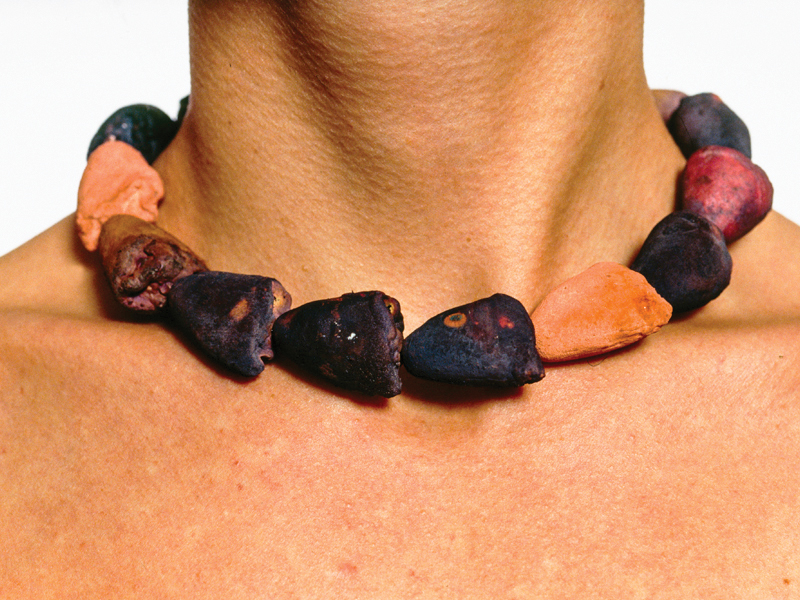
What kind of a dialogue are you trying to create between your work and your audience?
Eija Mustonen: I work with themes that interest me, themes that are relevant for me. I hope and trust that my audience can also find them relevant. Often I give my work a title that gives hints and helps to understand them, not too clearly but clear enough to make your own interpretation.
What is your design process?
Eija Mustonen: I have a theme with which I work for a while, sometimes it lasts longer, sometimes less. The theme, the idea, helps me to choose the form, the material, the technique, the size, the color, etc. The theme is a guide for me, as with a specific theme I’m able to tell stories I’m interested in; I wonder, I ask questions. Working in a studio is similar to working in the garden: building, planting, looking, taking away, doing it again, changing places or elements, looking at it and thinking about it again. I work until I’m satisfied with how it looks and feels.
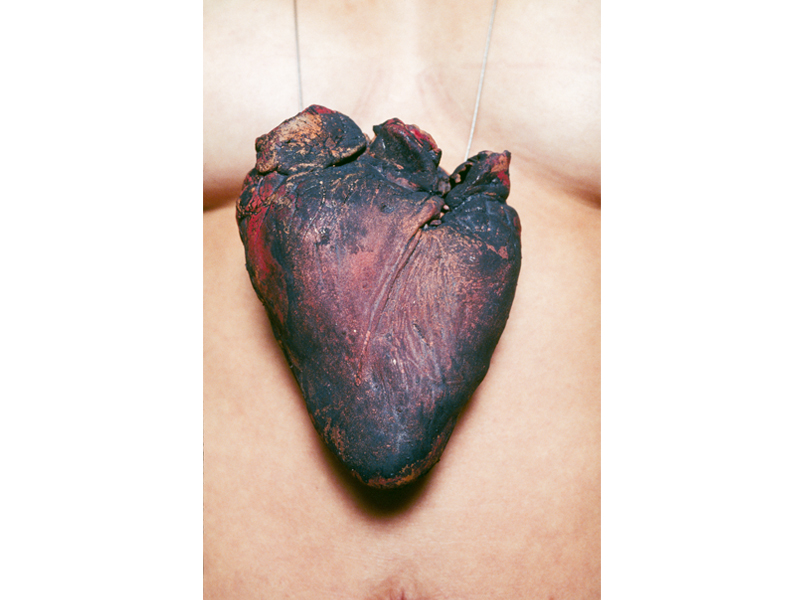
Some of your large pieces are made in nickel silver, a harder and more unusual material to work with. In some of your “landscape” pieces you use metal, textiles, and fiber threads. How do you approach the selection of materials for your work?
Eija Mustonen: Every now and then I want to challenge myself with new materials, new things, sometimes also with new techniques. As I have a theme that helps me to work, it also helps me to choose the material. In the landscape work I used oxidized silver with textile and red thread. The textile and red thread are connected with my own roots, in Karelia.

Is Tytärsaari a “landscape” piece?
Eija Mustonen: Tytärsaari was made after the landscape works and before the mourning jewelry, so it is a bit of both. Tytärsaari is nowadays a Russian island near Finland; it used to belong to Finland.
Besides being a working artist, you have been teaching, and curating exhibits and art events. How do you balance your own creative work with other activities?
Eija Mustonen: Without my art I couldn’t be a teacher and then again without my “school” work I couldn’t be as free in my own creative work. I work slowly in my studio, spending most of my holidays and weekends there.

What are you reading, hearing, or seeing of particular interest?
Eija Mustonen: Art (fine arts, literature, music, movies), architecture, landscape, and life in the country have been close to me. I spend time in nature wandering, picking mushrooms and berries, and then cooking them for my family and friends.
Thank you.

